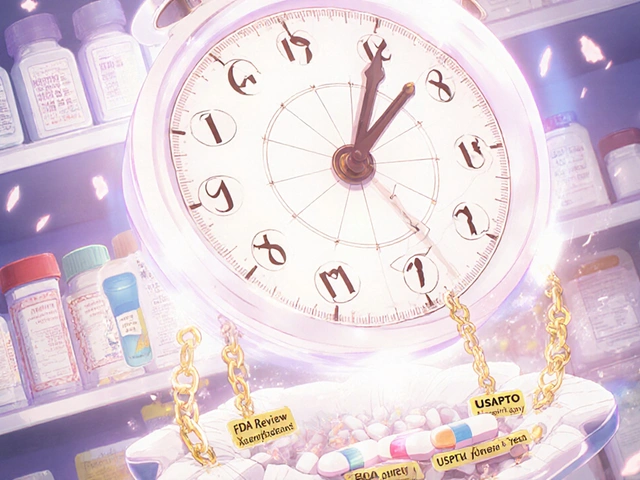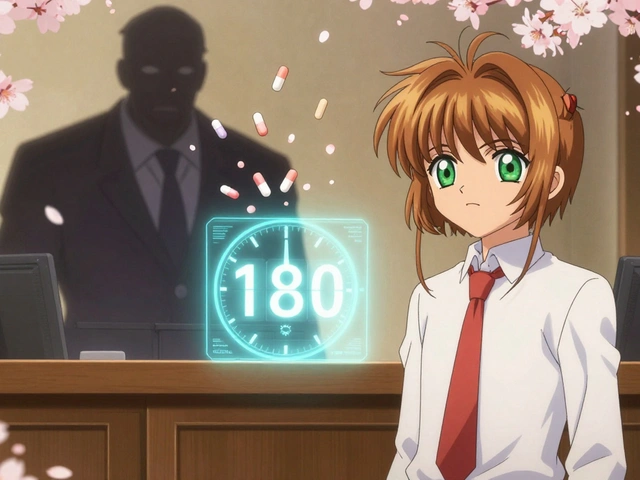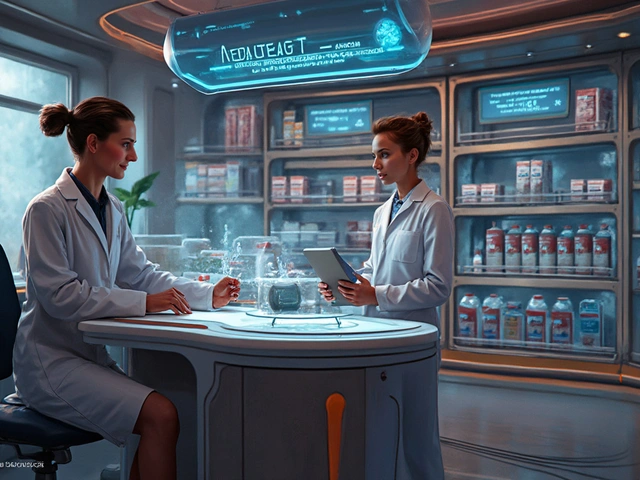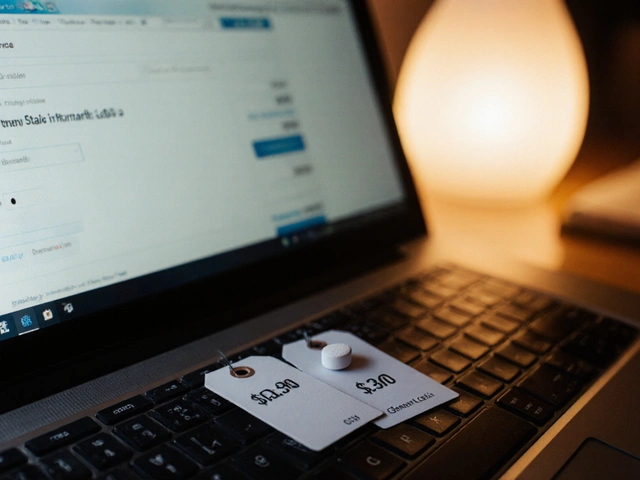Most people think a drug patent lasts 20 years - and that’s technically true. But if you’re waiting for a brand-name medication to drop in price because the patent expired, you might be waiting much longer than expected. The truth is, drug patent expiration rarely means 20 years of market control. In fact, many drugs lose their exclusivity after just 7 to 12 years on the market. Why? Because the clock starts ticking the day the patent is filed - not when the drug hits shelves.
How the 20-Year Clock Actually Works
The U.S. patent system gives pharmaceutical companies 20 years of protection from the date they file their patent application. That’s set by federal law (35 U.S.C. § 154) and matches global standards. But here’s the catch: drug development takes years. Before a company can even sell a pill, it has to run clinical trials, submit data to the FDA, and wait for approval. That process usually takes 8 to 10 years - sometimes longer. So if a company files a patent in 2010, but the drug doesn’t get FDA approval until 2020, they’ve already used up half their patent life before they even start making money. That leaves them with only 10 years to recoup their $2.3 billion average R&D investment. Without adjustments, many drugs would become generic before they ever turned a profit.Patent Term Extension: The 5-Year Lifeline
This is where the Hatch-Waxman Act of 1984 comes in. It lets drugmakers apply for a patent term extension to make up for time lost during FDA review. The law allows up to 5 extra years of protection - but with a hard cap: the total market exclusivity can’t exceed 14 years from the date the FDA approves the drug. For example, if a drug gets approved in 2024 and the original patent expires in 2030, the company can get a 5-year extension, pushing the expiration to 2035 - but only if the total time from approval to expiration stays under 14 years. That means if the patent would have expired in 2038, the extension only lasts until 2038 minus the 14-year cap. It’s not a free bonus - it’s a precise calculation. There’s another catch: the company must apply for this extension within 60 days of FDA approval. Miss that window, and the extension is gone forever. Many small biotech firms lose out simply because they don’t have legal teams dedicated to tracking deadlines.Patent Term Adjustment: When the USPTO Slows Down
Even if the FDA moves fast, the patent office might not. The USPTO is responsible for reviewing and granting patents, and delays happen. That’s where patent term adjustment (PTA) kicks in. If the USPTO takes more than 14 months to issue the first office action, or more than three years to grant the patent, the company gets extra days added to the patent term. These delays are called A-Delay and B-Delay. But here’s the twist: if the applicant causes delays - like taking too long to respond to a USPTO request - those days are subtracted. It’s a balancing act. In 2023, DrugPatentWatch found that the average PTA added about 1.5 years to a drug’s patent life. For some drugs, it’s been over 4 years. That’s why two drugs filed on the same day can have wildly different expiration dates.It’s Not Just One Patent - It’s a Portfolio
Most big drugs aren’t protected by just one patent. They’re wrapped in layers - what’s called a patent thicket. A single drug might have:- A patent on the active ingredient
- A patent on the pill’s coating or formulation
- A patent on how it’s manufactured
- A patent on how it’s used to treat a specific condition

Regulatory Exclusivity: The Hidden Clock
Beyond patents, the FDA gives out its own exclusivity periods - and they don’t always line up with patent dates. These are separate legal protections that block generics even if the patent is gone.- New Chemical Entity (NCE) exclusivity: 5 years. During this time, the FDA can’t even review a generic application.
- Orphan Drug exclusivity: 7 years for drugs treating rare diseases (under 200,000 U.S. patients).
- New Clinical Investigation exclusivity: 3 years if the drug gets a new use or dosage based on new studies.
- Pediatric exclusivity: 6 months added to any existing patent or exclusivity period if the company does extra studies on children.
What Happens When the Patent Expires?
Once all protections fall away, generics flood the market. The first generic company to file a challenge gets 180 days of exclusive rights to sell their version - a huge incentive to take legal risks. After that, dozens of competitors enter, and prices drop fast. Data from IQVIA shows that after Eliquis (apixaban) lost patent protection in late 2022, generic versions captured 35% of the market within six months. By the end of year one, prices fell 62%. In small molecule drugs, generics typically reach 90% market share within 18 months. But it’s not always that simple. Biologics - complex drugs made from living cells - face slower generic entry because their copies (called biosimilars) are harder to make and prove equivalent. They often take 2 to 3 years to reach 50% market share.The Patent Cliff and the $62 Billion Problem
The term “patent cliff” refers to the moment when a blockbuster drug loses exclusivity and revenue crashes. In 2025, the industry is facing its biggest cliff yet. Evaluate Pharma predicts $62 billion in lost revenue this year alone - the highest single-year drop since records began. Drugs like Humira (adalimumab), which had 137 patents covering different uses and formulations, created a perfect storm when its protections finally collapsed in 2023. Over 10 biosimilars entered the market within months. The price dropped by 75% in the U.S. within a year. Big pharma companies don’t sit idle. About 78% of them use “lifecycle management” strategies - reformulating the drug, adding companion diagnostics, or bundling it with other treatments - to keep revenue flowing after the patent expires. AstraZeneca’s Tagrisso (osimertinib) is a textbook example. The main patent expires in 2026, but newer patents on combination therapies extend protection until 2033.








Kihya Beitz November 15, 2025
So let me get this straight - we pay $500 for a pill because some lawyer filed a patent in 2008 and the FDA took 10 years to say ‘sure, go ahead’? And now we’re supposed to be *grateful* they got 14 years of monopoly? 😒
Meanwhile, my insulin costs more than my rent. Thanks, capitalism.
Jennifer Walton November 16, 2025
The patent system is a mirror. It reflects our values. We value profit over life.
Edward Ward November 18, 2025
I think it’s really important to recognize that the 20-year patent term isn’t just some arbitrary number - it’s a carefully balanced mechanism designed to incentivize innovation while still allowing for eventual generic competition. The fact that the clock starts at filing, not approval, is actually a brilliant feature of the system - it forces companies to innovate early and file aggressively, which in turn accelerates the entire pipeline. Sure, there are abuses - evergreening, patent thickets - but those are edge cases, not the rule. The real problem is the lack of transparency in the Orange Book and the bureaucratic inertia at the USPTO, not the patent term itself. We need better tools, not shorter terms.
Andrew Eppich November 19, 2025
It's not complicated. Companies are greedy. They exploit loopholes. The law is broken. Fix it.
Jessica Chambers November 21, 2025
I just checked my prescription - patent expires 2028. Copay still $120. 🤡
Also, my pharmacist said they’re waiting on ‘formulary approval’ - which means the insurance company is still negotiating with Big Pharma. So yeah. Still waiting.
Aidan McCord-Amasis November 21, 2025
Patents? More like profit traps. 🤡💸
Adam Dille November 23, 2025
Honestly, I didn’t even know about PTA or Hatch-Waxman until this post. That’s wild. I thought generics just popped up after 20 years. Turns out it’s like a legal maze with bonus rounds. 😅
Also, 14 years max from approval? That’s still longer than my last relationship.
Katie Baker November 23, 2025
This is actually super helpful! I’ve been trying to understand why my meds are so expensive. I’m going to check the Orange Book tonight - thanks for breaking it down without jargon! 💪❤️
John Foster November 25, 2025
There’s a metaphysical layer here, you know. The patent isn’t just a legal instrument - it’s a temporal artifact. It freezes time. It says: ‘This molecule, this idea, this hope - belongs to one entity, for one duration.’ But biology doesn’t care about patents. Pain doesn’t care about patents. The body heals on its own schedule, not the USPTO’s. And yet, we allow corporations to dictate the rhythm of human suffering through ink and bureaucracy. The real tragedy isn’t the 20-year term - it’s that we’ve normalized it.
Shyamal Spadoni November 25, 2025
This whole system is a CIA operation. You think the FDA is independent? Nah. They’re owned by Pfizer. The 20-year thing? A distraction. The real reason generics don’t come out is because the government puts a secret ‘blocker’ in the manufacturing plants. I saw a guy on YouTube who said he got his blood tested and found trace amounts of microchips in the pills. He said they track who takes what. I don’t know man… but I stopped taking my meds. I’m just drinking lemon water now. #FreeThePills
Ogonna Igbo November 27, 2025
America thinks it invented medicine. But Nigeria has been making affordable antivirals for decades without patent drama. You spend billions on lawyers and patents while our villages use traditional herbs and live longer. Your system is not innovation - it’s exploitation. You patent life itself. We just heal.
BABA SABKA November 27, 2025
The patent thicket strategy is a classic oligopoly play - it’s not even clever, it’s just predatory. But here’s the real jargon: regulatory capture. The FDA and USPTO are staffed by ex-pharma lawyers. They don’t regulate - they rubber-stamp. The ‘14-year cap’? A fig leaf. The real monopoly lasts 17–20 years, and the generics get sued into oblivion before they even launch. This isn’t capitalism. It’s feudalism with a patent lawyer.
Chris Bryan November 28, 2025
The fact that we even debate this shows how far we’ve fallen. Patents are property. If you steal a car, you go to jail. If you steal a drug formula, you get a lawsuit. But somehow, people think it’s okay to ‘rip off’ a life-saving medicine? That’s socialism. And it’s dangerous. The next pandemic? We won’t have a vaccine because no one will invest. Thank you, woke activists.
Jonathan Dobey November 30, 2025
The patent system is the last temple of the American god of Capital. We worship at the altar of the 20-year monopoly, burning incense of shareholder dividends, chanting mantras of ROI. But the gods are dying. Biosimilars are rising. The Orange Book is cracking. The people are reading. And soon - oh, soon - the altar will be dust, and the priests will beg for mercy. The patent cliff isn’t a cliff. It’s a reckoning.